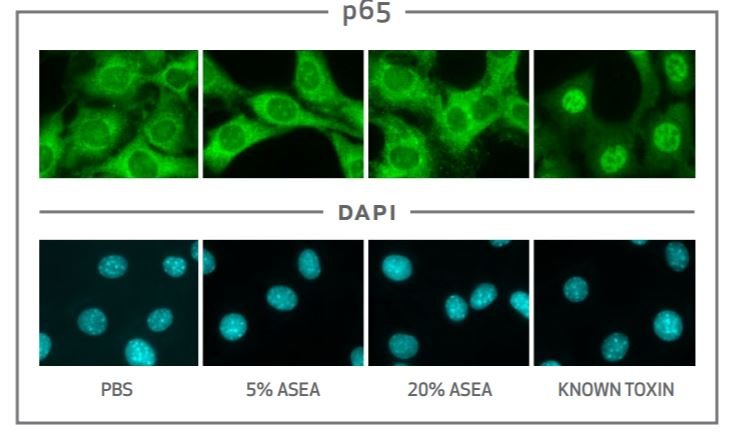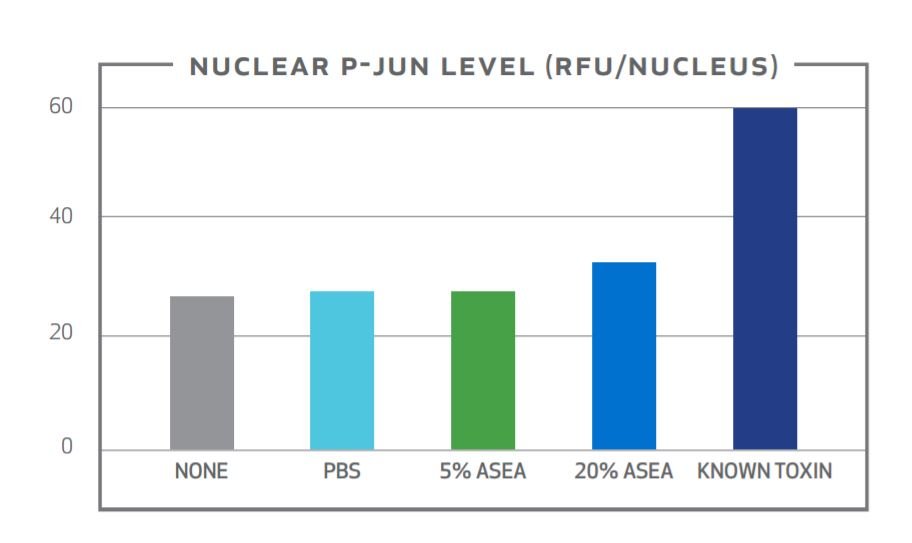ASEA commissioned Pacific Northwest National Laboratory to study the toxicity response of eukaryotic cells when in contact with ASEA Redox Supplement. Eukaryotic cells contain an array of cellular structures that play important roles in energy balance, metabolism, and gene expression. These cells, when stressed by a toxin, respond by sending transcription factors—proteins that control which genes are turned on or off—into the nucleus. Once inside the nucleus, these transcription factors activate the genes responsible for cellular defense and protection against toxins. The arrangement of the chromosomes (called translocation) of particular transcription factors into the nucleus can be seen under a fluorescent microscope when specific indicator dyes stain the cells.
If the cell undergoes a toxic response, the fluorescent dye is pulled into the nucleus along with the transcription factor. In this experiment, two transcription factors, the p65 subunit of NF-kappaB and P-Jun, were monitored. These two transcription factors are known to activate in all toxic responses.
Study Protocol
In the photographs from the fluorescent microscopic images of the cells, a toxic response is registered if the green dye is seen to move into the nucleus.

The target cells were cultured and exposed to:
1. Phosphate buffered saline (PBS)—the negative control where no toxic response was expected
2. 5% ASEA Redox Supplement—supplementing the equivalent to replacing 5% of a blood plasma solution with ASEA Redox Supplement
3. 20% ASEA Redox Supplement—Supplementing the equivalent to replacing 20% of a blood plasma solution with ASEA Redox Supplement
4. A known toxin—the positive control where a toxic response was expected The reaction of the transcription factors (tp65 subunit of NF-kappaB and P-Jun), were photographed under a microscope after exposure to the four solutions. A DAPI stain was applied to the nuclei to help computer software to identify the cell nucleus in the pictures.


Results Summary
Visual evidence from the study manifested that direct exposure of cells to relatively high concentrations of ASEA Redox Supplement does not register a significant toxic response as measured by nuclear translocation. Based on these results, ASEA Redox Supplement, orally administered, does not manifest a toxic response or inflammation to exposed tissue.
